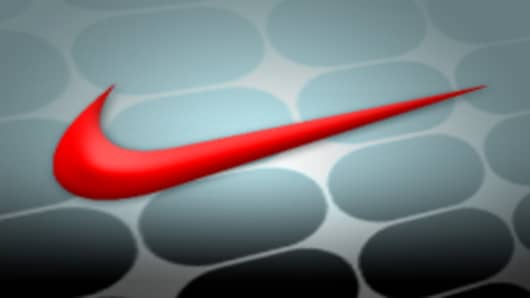Darren: How much is this about jumpstarting a declining basketball shoe market?
Bryant: This whole concept just came out of me just wanting to have a lighter shoe. That's really what it was. When I first brought it up in the meeting, everybody kind of looked at me and thought I had three heads or something. Like I said, something that was just so taboo. But I really believe in it. I just feel like if I can have a lighter shoe, my ankle can move the way it was intended to move. I just feel like it could make me a better basketball player -- minimize the seconds that I lose in changing directions and getting up off the floor.
Darren: Everyone will be focusing on your ankles now. How much pressure do you feel to not get hurt?
Bryant: The foundation starts with the belief I have in the shoe and I just believe in it tremendously and the technology that's put into it. So I don't really feel any added pressure I just really think that it will make you faster, it will make you jump higher -- just for the simple fact that it's lighter.
Darren: Putting out a low-top certainly gets the talk going.
Bryant: From the business perspective, it's always good to come with something that's not caught up in the sea of sameness, something that brings a little bit more change, a little bit more energy to the game. So from the business side of it, I feel like it can't come at a better time. And now we'll just have to wait and see what kind of energy it brings.
Darren: What do you feel the buzz is going to be for this shoe?
Bryant: I think a lot of it is going to be word-of-mouth. I think some people are going to be a little afraid or apprehensive about trying this shoe, but those who do are going to see how well it plays, how soft it is, how light it is, how much stability you actually have. Because the shoe actually has a calcaneal heel lock so it prevents your heel from sliding around so that gives you a great deal of protection. And I think that once people start playing in it, it will start spreading the word once they talk about the shoe and how it works for them.
Darren: There is expected to be some brushback from traditionalists. You think the folks at Nike know what they are doing?
Bryant: I always tease them all the time because I give them mixed messages. Like I want a shoe that's the lightest basketball shoe ever. I want a low cut. I want it to play low to the floor, but I don't want to sacrifice stability. I don't want to sacrifice cushioning in the shoe. So I'm kind of giving them opposite sides of the spectrum, but they always seem to come back with the shoe that is just right.
Darren: A bit off topic, but certainly topical at these times. The NBA recently laid nine percent of its work force, there are some arenas that are definitely less than full. How much are players aware of the economic environment?
Bryant: One thing we talk about as players is when you go to the Staples Center to play a game or you are on the road or you're playing wherever you are, to make sure you bring 100 percent even more so. Because the fans that are at the game, they spend their hard earned money to come watch you do what you do best and play hard and have a good showing. We as players talk about that and say "OK, if they're going to spend their hard earned money to watch us and perform and play, we got to go out there and make sure that we're ready to go and playing with the effort that they deserve to watch."
Darren: And you guys are talking the importance of playing hard now more than ever?
Bryant: Absolutely. Now more now than ever before. It's something that we hold dear to our hearts and obviously it's a tough time, but we'll be able to pull through it I'm sure.
Questions? Comments? SportsBiz@cnbc.com



